Suspended floors The BRANZ Technical Helpline often receives queries for designing and building suspended timber floors and dealing with uplift Nine of the most common questions are answered here Figure 1 Suspended timber floor joistHollow floors, also known as suspended or timber floors, are simply timber joists suspended across and supported by load bearing walls under the floor The ends of these timber joists are built into, or suspended by joist hangers from the external walls of the property There are suspended concrete floors but we do not cover these here as they are more typically used inSpacing joists in your shed 16inches on center will give you a firmer feel with less bounce and increase the load capacity of the floor While you may be OK with the joist span at 24 inches the floor will be maxed out to the limits Many other factors and considerations can arise when constructing your first shed, below are some of the
Floor Joists Diagram
What is the spacing for deck joists
What is the spacing for deck joists- One of the most common claims are squeaky timber floors Deflection in suspended floors is often caused by inadequate joists or joists at incorrect centres In this article, we will take a look at what engineered joists are, their disadvantages and problems as well as what you should look out for onsite and alternative solutions Figure 2 Suspended timber floor with floorboards removed For most heritage properties, the most effective and appropriate way to insulate a suspended floor and improve its airtightness is to retrofit insulation beneath the floorboards, between the supporting joists (figure 2) See our detailed installation guide for more details



Suspended Timber Floor Construction Studies Q1
Domestic Floor Joist Calculator This demo version is fixed at 1m clear span The full version allows any size Joist spacing mm This is the distance between joist centres Usually 400, 450 or 600mm, but any value can be used up to 610mm max 12 Timber strength class and joist size Automatically calculate suitable sizes or Enter a specific size 2 Dead load Suspended ground floor Suspended Timber Ground Floors consist of the finished timber floorboards being attached to floor joists, which are suspended above the subfloor of the foundation These floor joists are raised above the subfloor on small supporting walls called tassel walls (or sleeper walls) Click to see full answerProfoil™ Timber Suspended Floor Panels are suitable for use in both new and existing timber suspended floors and are simply fitted between the joists, supported on timber battens preinstalled to the faces of the joists, and a tongued & grooved chipboard or a timber floor finish is then applied The following table provides some necessary information to assist in the decision
Ceilings to timber joist floors are an established form of ceiling construction, widely used in both new housing and refurbishment Separating / compartment floors are often specified as fire and sound resisting floors in residential units, such as flats and apartments, to meet the requirements of national Building Regulations May 08 wwwgypsumie 7 Timber Joist_1408Layout 1 Suspended timber floor construction – underside of joists (ie crawlspace) 450 mm Bottom of cladding to paving – except masonry veneer 100 mm Bottom of cladding to unpaved ground – except masonry veneer 175 mm Back to top Floor levels Getting the floor level wrong can lead to ongoing moisture problems It can also bring serious Building Code compliance problemsTimber Joist Spacing The further apart the joists, the greater distance the ceiling lining will have to span and therefore the more onerous the conditions in fire 4 Timber Flooring The timber type, thickness and jointing are all critical 5 Suspended Ceilings The distance between the underside of the timber joists and the suspended ceiling protecting the floor is critical Normally, the
Joists are what support the weight of the rooms above them and are overlaid with a structural layer – traditionally pine floorboards, but on more modern properties it would be a chipboard or plywood product in sheet form (Below AmbiPlate 80 system, installed from beneath a suspended timber floor) Benefits of installing UFH in joisted floorsA suspended ceiling system, capable of providing up to 1 minutes fire resistance Suitable for internal drylining application to timber joist floors The fully concealed grid and ceiling lining can be used in conjunction with Gyproc plasterboards and Gyptone or Rigitone acoustic ceiling boards to create a seamless, monolithic appearance Refer to C06 S02 P355 – CasoLine mf mins 30 1Choosing the correct floor joist size depends on your building application, joist spacing, and several other factors These include the length of the span as well as the type and grade of the lumber being used Common joist spacings are 12 inches (3048 mm), 16 inches (4064 mm), and 24 inches (6096 mm) The amount of weight that needs to be supported can also be a




Confused Between Joists Or Suspended Floors
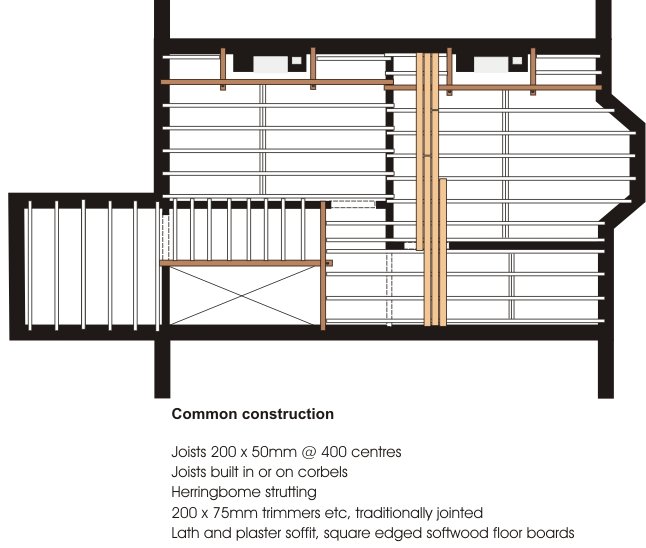



Evolution Of Building Elements
Technical Guidance Noggings for lateral restraint straps Technical Guidance Sealing around ends of engineering joists Technical Guidance Strutting to floor joists, (including attic trusses) Technical Guidance Support of joist hangers Technical Guidance Support of plasterboard NHBC Standards 21 Complete The main elements during construction of the suspended timber floor are loading of joists, positioning of joists, the spacing of Joists, evenly spaced joists and sizes of joists Materials For Suspended Timber Floor Insulation There are a variety of options for the material used in suspended timber floor insulation Their detail includes Celotex / Kingspan type PIRSuspended Screed Floors Komfort 350 System Komfort 350 System is where sheet steel flooring is fitted on top of wood floor joists, followed with laying of the underfloor heating pipes and the the liquid floor screed The steel sheets into across the length of the sheet by a unique dovetail joint and when fitted with screed becomes a structural floor The sheet distances with joists up to 1
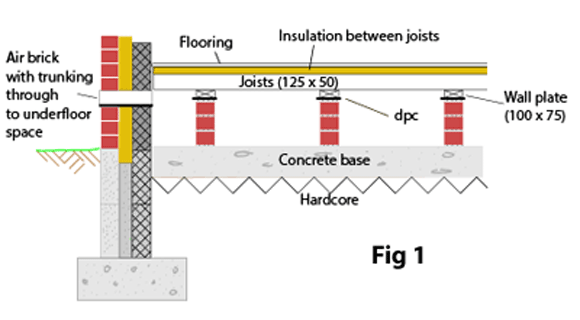



The Different Types Of Suspended Wooden Flooring Construction
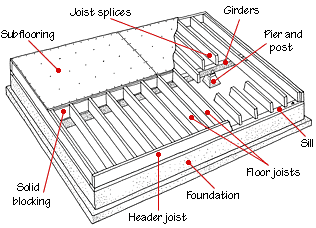



Floor Framing Structure
Refer to the TRADA Document "span tables for solid timber members in floors, ceilings and roofs (excluding trussed rafter roofs) for dwellings" or ask your LBC Surveyor for advice MAXIMUM CLEAR SPAN OF CEILING JOISTS IN METRES FOR C16 TIMBER Spacing between joists Size of ceiling joist 400mm 450mm 600mm 47 x 72 127 126 113 47 x 97 193 190 184 47 x 1 256Spacing between joist centres Solid timber joist Load bearing wall Minimum end bearing of 90mm Floor boarding Timber noggins to support perimeter edges of floor boarding Midspan strutting needed if span exceeds 25m Strutting/noggin infill between joists If masonry infill, the top of the masonry should finish at least 12mm below the top of the joist to allow for shrinkageFloor Joist Bridging Spacing The IRC does not mandate floor joist bridging unless your floor joists are greater than 12" wide If so, then bridging should be placed no less than 8' on center from the next row of bridging The caveat to this rule is that engineered joists of all kinds, including Ibeams of any material, must be installed per the manufacturer's directions and is exempt



Building Guidelines Suspended Timber Floors




6 4 10 Construction Of Timber Floors Nhbc Standards 21 Nhbc Standards 21
Timber joist Ceilings to timber joist floors are an established form of ceiling construction, which is widely used in both new housing and refurbishment Separating / compartment floors are often specified as fire and sound resisting floors in residential units such as flats and apartments to meet the requirements of national Building Regulations The ceilings comprise one or two layers ofWith a suspended timber floor it is important to keep the space under the floor well ventilated to avoid damp build up As you install the insulation it's worth taking the time to check for damp and to make sure that all the air bricks providing air are free of any obstructions such as old plaster, mortar or even spiders webs If you find any damp problems this is a good time to fix them WeSuspended Timber Ground Floors consist of the finished timber floorboards being attached to floor joists, which are suspended above the subfloor of the foundation These floor joists are raised above the subfloor on small supporting walls called tassel walls (or sleeper walls) A wallplate is then attached to the top of the tassel walls, on which the floor joists rest on A damp proof
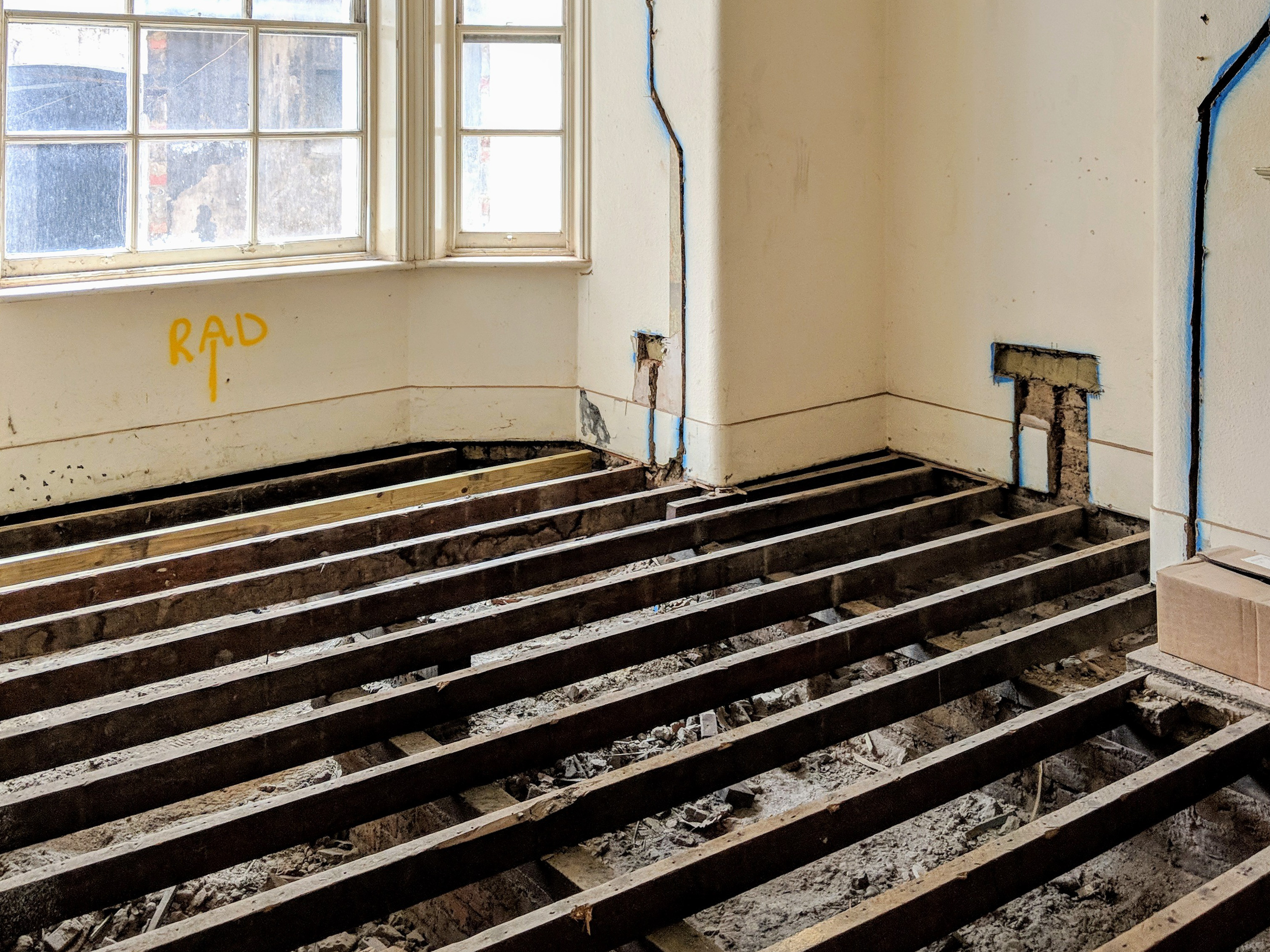



A Best Practice Approach To Insulating Suspended Timber Floors Ecological Building Systems




How To Repair A Rotten Floor Mac Carpentry
©TIMBER QUEENSLAND LIMITED TECHNICAL DATA SHEET 18 TIMBER FLOORS RECOMMENDED INSTALLATION Revised March 14 Page 1 This information sheet outlines the recommended practices for laying timber strip floors over timber and engineered timber joists (it does not include steel joists), structural subfloors such as plywood, particleboard and over concrete, butSo, what is the proper shed floor joist spacing? As with the joist size, the building code for your structure will stipulate the proper spacing between floor joists The code itself is determined by the engineering requirements of a particular building Normally, floor joists are spaced 16 inches apart on center This means from the center of one upright joist to the center of the next Given that 2x8s are actually 1¾ inches
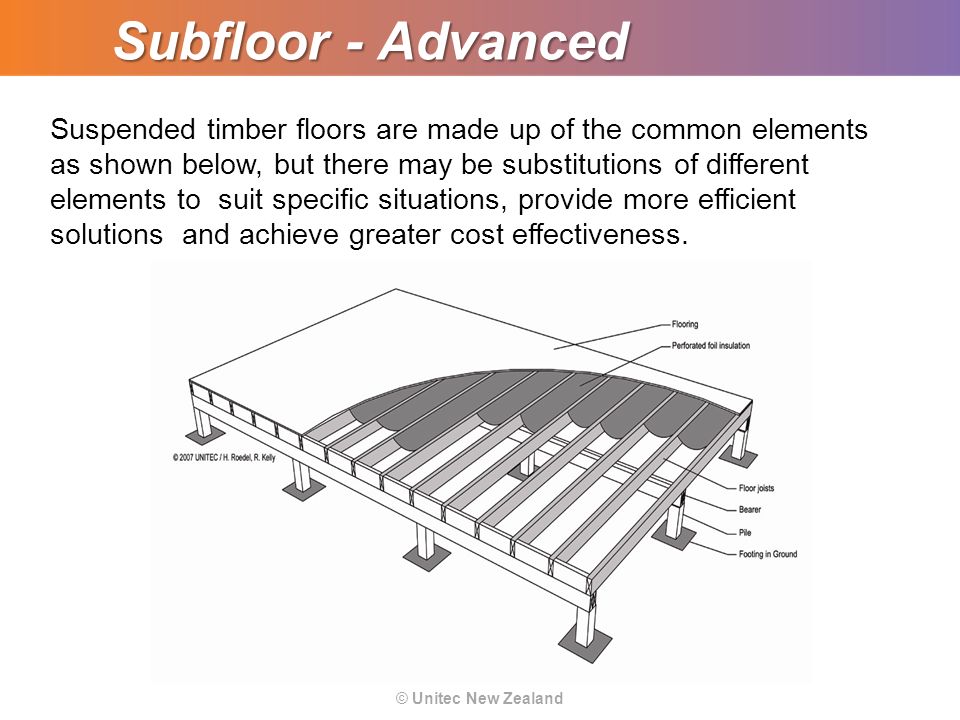



Topic 11 Timber Subfloor Advanced Ppt Video Online Download




Floors And Ceilings
Watch this video to learn about joist spacing and blocking recommendations for installing TimberTech AZEK DeckingThe floor should be levelled from the staircase trimmer and trimming joist (f) joist spacings Joist spacing should be as shown on the drawings If the joist spacing is not shown, the designer should provide spacing details Do not increase the spacing Joists should not be spaced at more than 600mm centres The decking material to be usedSolid timber products PosiJoist combines the lightness of timber with the strength of the PosiStrut steel web allowing you to span far greater distances than would be possible with alternative timber products This gives you unequalled design freedom across a wide range of applications for both floor and roof in domestic, industrial and commercial applications The PosiJoist allows a
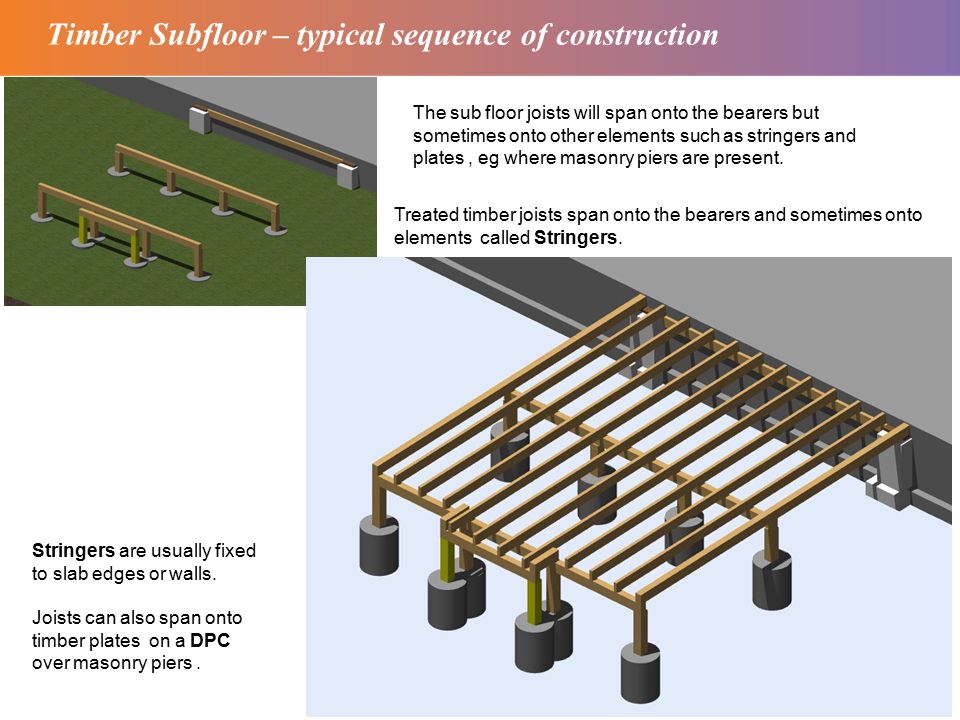



Topic 7 Timber Subfloor Systems Basic Ppt Video Online Download




6 Ways To Stiffen A Bouncy Floor Fine Homebuilding
Often, all the joists for suspended floors will be sized to accommodate the largest spans In these situations, some of the joists will be larger than required for their spans If they span less than 25m, no midspan blocking is required (see Figure 1) Midspan lateral support can be provided by Herringbone strutting (clause 7123) Solid timber the same depth as the joist – solidAcross a suspended timber floor The subfloor air space delivers an improvement in the "Total RValue" of the flooring system Rflor incorporates a termiticide for added protection against termites and is easily identified by its blue edge coat STRUCTAflorTerminator A termite protected sheet flooring that provides added protection against termite attack It should be used in conjunction Proper Spacing for Floor Joists by Sarah in DIY 0 0 Share on Facebook Share on Twitter Making floors with wood certainly needs to make floor beams of the right size so that the floor is resistant and doesn't waste wood Providing spacing between floor beams is an important code in the manufacture of wooden floor buildings There are several




Suspended Floor Insulation Saint Gobain Insulation Uk



Floor Joist Span Tables Calculator
This paper examines suspended timber ground floor heatflow by presenting high resolution insitu heatflux measurements undertaken in a case study house at 15 point locations on the floor The results highlight significant variability in observed heatflow point Uvalues range from 056 ± 005 to 118 ± 011 Wm−2 K−1 This highlights that observing only a few measurements is unlikelyThe simplest way of insulating suspended timber ground floors is to fit insulation boards between the joists and support battens This floor insulation method is commonly used for upgrading the thermal performance of existing timber floors as it has no impact on floor levels Suspended timber floors, which are typically found in older houses, are normally made from timber floorboards which are then attached to joists just above the foundations of a house This creates a small gap and allows ventilation and air movement to prevent damp forming in the timber joists It's also common to have suspended concrete floors in a domestic and



Floor Joists Diagram



Http Www Hyne Com Au Documents Feature documents Tq 18 Timber Floors Recommended Installation Final Pdf
Over bearers and joists, timberbased sheet flooring products and concrete slabs Generally, Those selecting a timber floor will often choose on colour, with board width influencing how the natural colours are blended Timber hardness, or matching to an existing floor, can also be of prime importance Aspects such as the origin of the flooring in terms of country, forest type or recycledBeam and joist floor frames can be constructed on site or off site and transported in, depending on your foundation The wood is water and weatherproofed first, and may be termite proofed as well when needed The beams are laid down, grooves are cut in and the joists are then fitted in Joists should only ever meet each other over the middle of a beam Because the joists will be evenlyTimber floor construction details – these details and span tables are not suitable for use with nondomestic situations, where the floor timbers must be calculated by a structural engineer due to the higher loadings carried The following table gives details of allowable spans and spacing between joists for the most common timber sizes used in floor construction All the figures are based on



Historicengland Org Uk Images Books Publications Eehb Insulation Suspended Timber Floors Heag086 Suspended Timber Floors
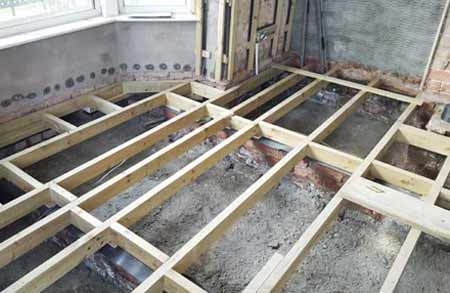



Suspended Timber Floor And How To Build A Floating Hollow Timber Floor Diy Doctor
Well over 5 years later and I am back at it! Joists can usually span up to 15 times their thickness in feet The spacing between joists is 12"oc or 16"oc for composite and 5/4 decking, and up to 24"oc for 2×6 deck boards In this guide, we'll discuss joist sizing, spans, spacing,This is how the renovation all started so at least we had a tried and tested method to use We had intended to



Floor Joist Count




Concrete Vs Timber Floors
Joist spacing (the closer the joists, the greater the effect of thermal bridging) subfloor construction (if an open subfloor, lining will be required) Although new buildings can have a larger joist size if a higher performance is required, in retrofit situations, the achievable insulation value may be limited by the joist depth Figure 1 Suspended timber floor with bulk insulation and lining A suspended floor is a ground floor with a void underneath the structure The floor can be formed in various ways, using timber joists, precast concrete panels, block and beam system or cast insitu with reinforced concrete However, the floor structure is supported by external and internal walls Supports underneath the floor are permanent and include sleeper walls or timberTimber suspended ground floors, including the decking material, shall be designed to (a) support self weight, dead loads and imposed loads (b) transmit loads safely to the supporting structure (c) not deflect unduly (d) take account of the adverse effects of shrinkage and movement For guidance, reference should be made to Chapter 64 'Timber and concrete upper floors'




What Is A Suspended Timber Floor Discount Flooring Depot Blog
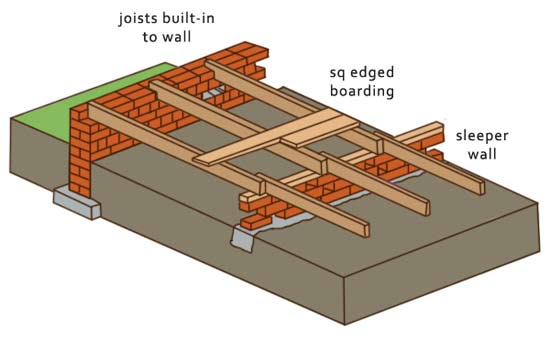



Suspended Timber Floor And How To Build A Floating Hollow Timber Floor Diy Doctor
Timber floor joists shall be adequate for the spans and loads, and be correctly installed Solid timber joist sizes are provided in the BS span tables Where the tables do not apply, or where there are concentrated loads, floor joists should be designed by an engineer in accordance with Technical Requirement R5Insulating Suspended Timber Floors As indicated above not all suspended timber fl oors require insulation and enclosing sub fl oor spaces in mixed climates may be suf fi cient to reduce heat loss to acceptable levels However, in cool and also some other climates fl oors require insulation The climates requiring insulation to the underside of suspended timber fl oors are coolThe metal spreader or heat diffusion plates are fitted directly on the top of the suspended timber floor joists or on top of floor battens The Aluminium like most metal conducts heat well, making this a good component for heat transfer in an underfloor heating system Showing all 17 results Underfloor Heating Fit from Below Spreader J Plates – 40 Aluminium Plates Suspended Floor –




Floor Joist An Overview Sciencedirect Topics




71 Top Tips When Fixing A Suspended Timber Floor Make It Moregeous
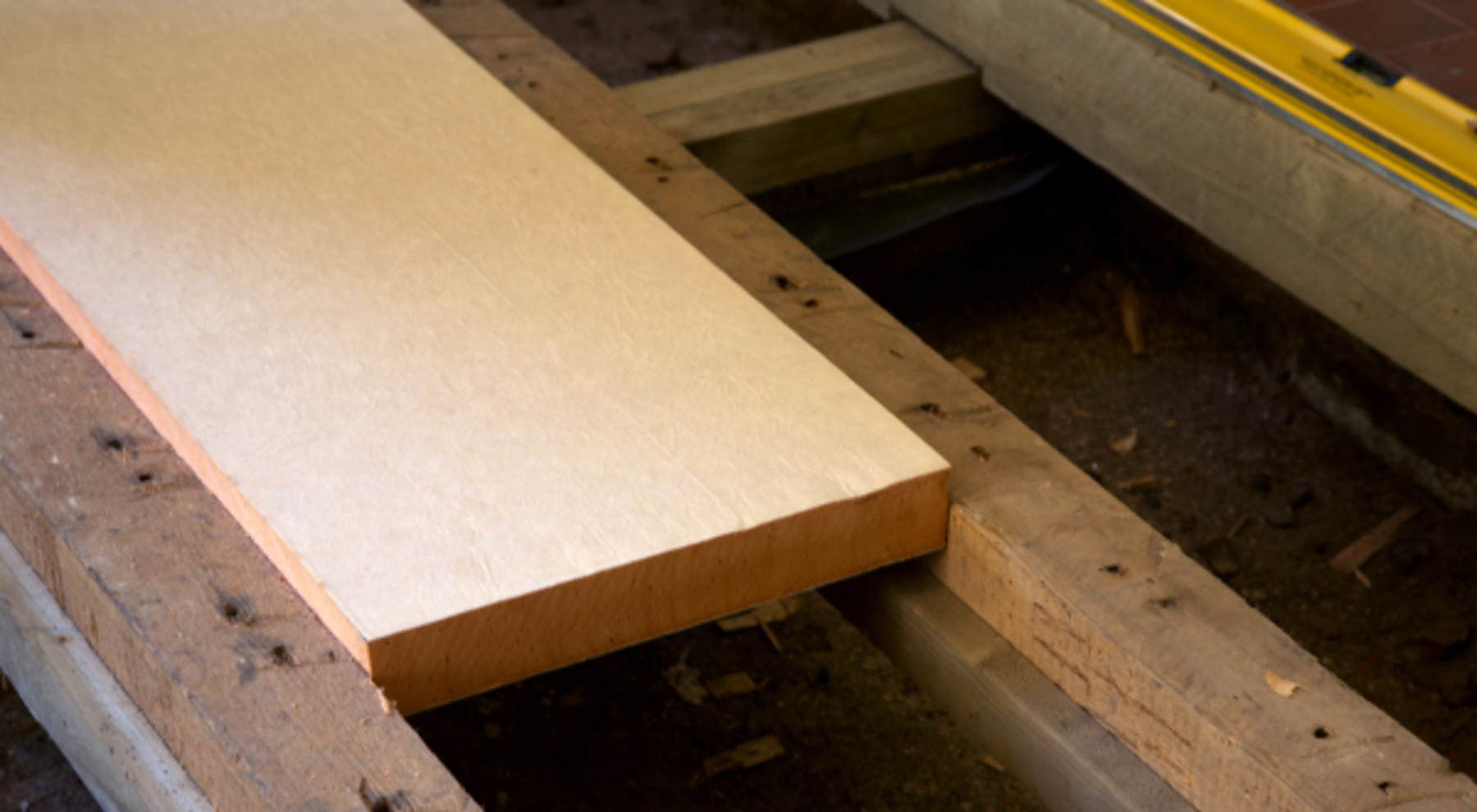



Insulating Under A Suspended Timber Floor Insulation Kingspan Great Britain




A Best Practice Approach To Insulating Suspended Timber Floors Ecological Building Systems



Suspended Timber Floor Construction Studies Q1




6 Ground Floors Construction Studies
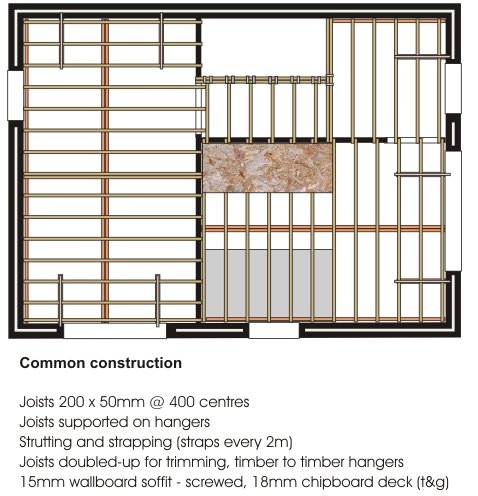



Evolution Of Building Elements




Floors
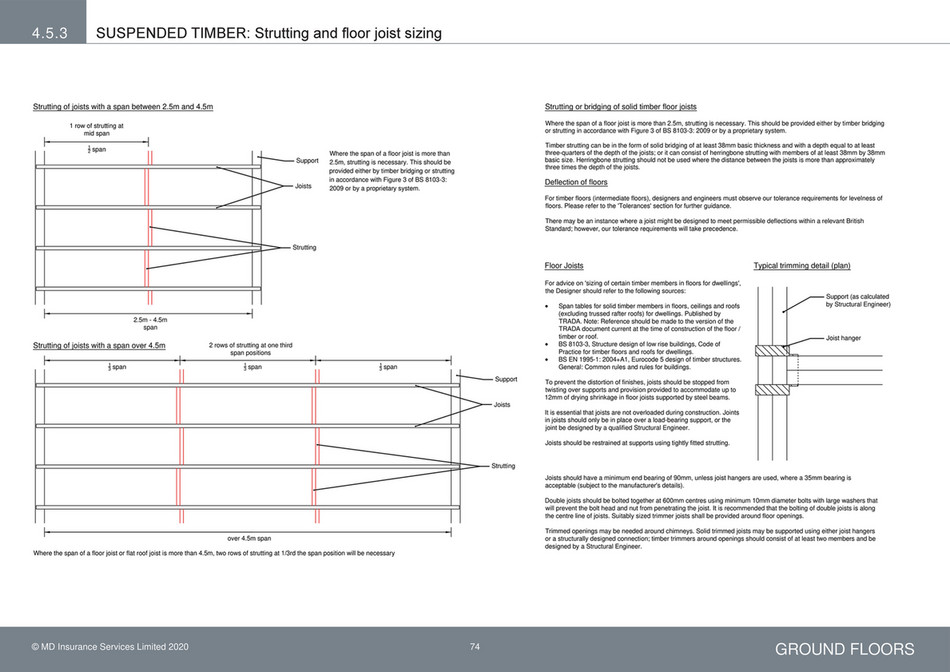



Premier Guarantee Technical Manual Version 13 Page 76 Created With Publitas Com
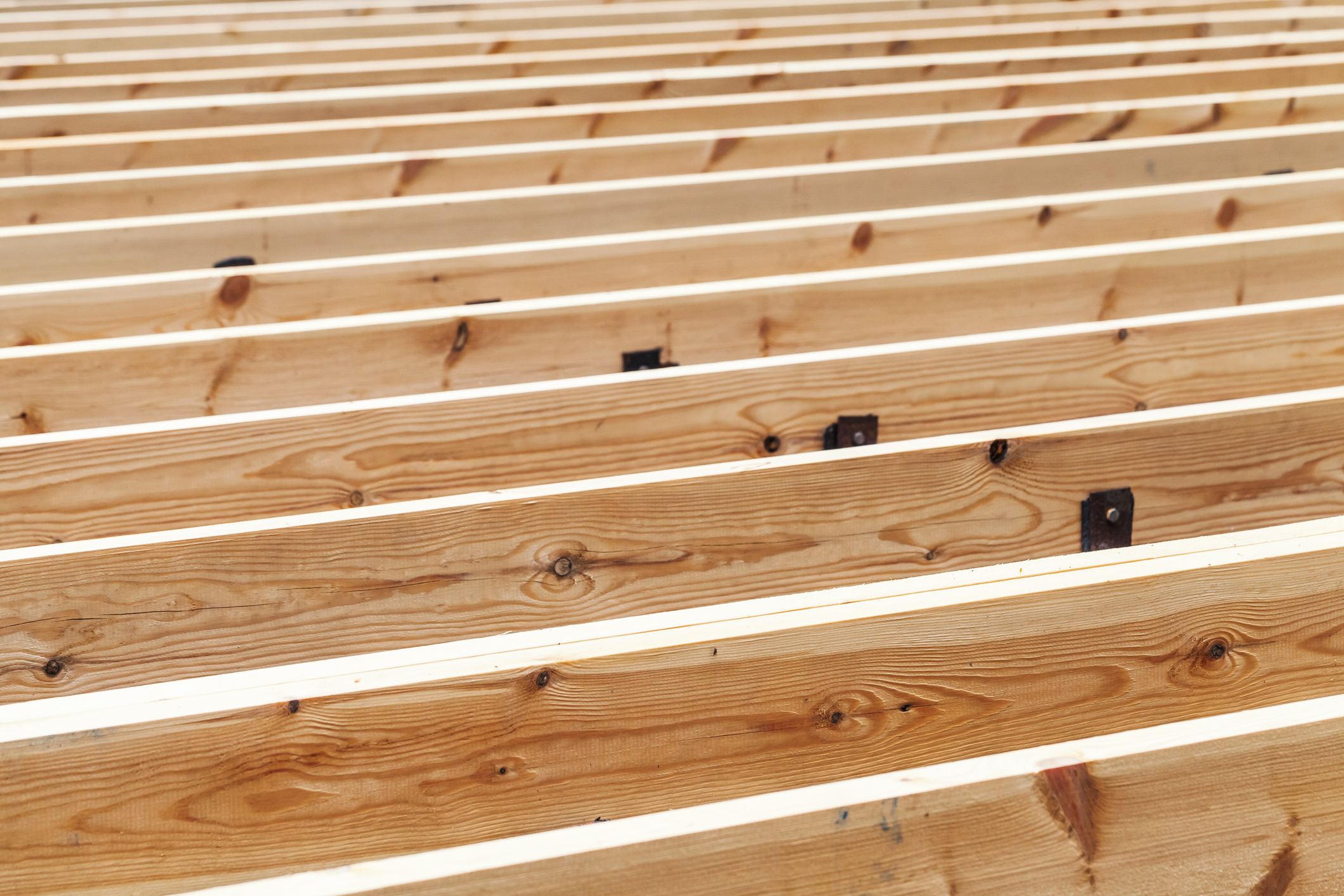



Comparing Ground Floor Structure Costs Homebuilding
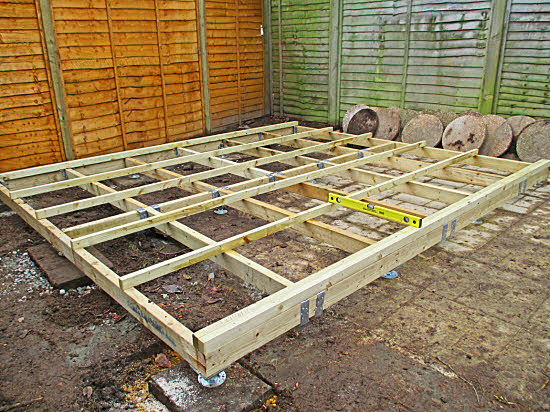



How To Make A Shed Floor Strong And Durable



Firming Up A Suspended Floor Page 2 Steve Hoffman Music Forums




What Size Floor Joist Spacing Should You Use Outdoor Storage Options
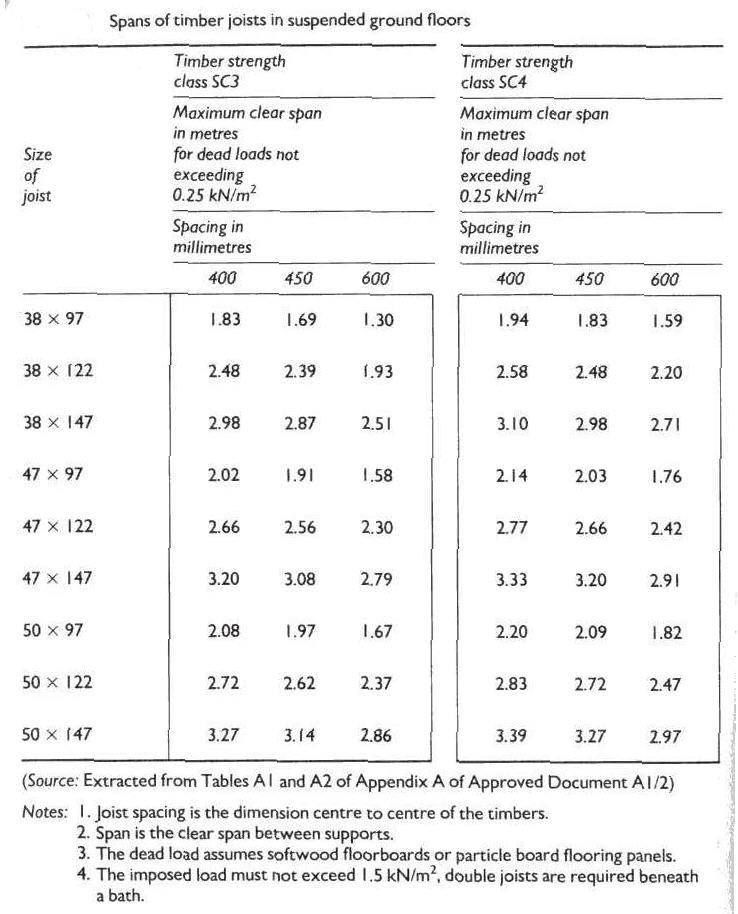



Tech2 Html
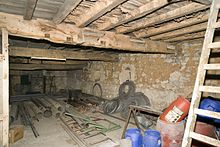



Joist Wikipedia




Floor Joist Span Tables For Surveyors Floor Construction Right Survey
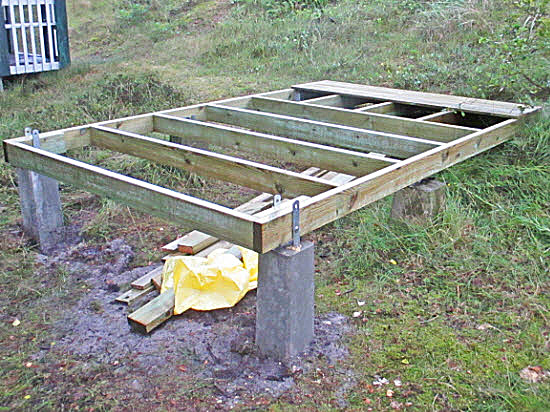



How To Make A Shed Floor Strong And Durable
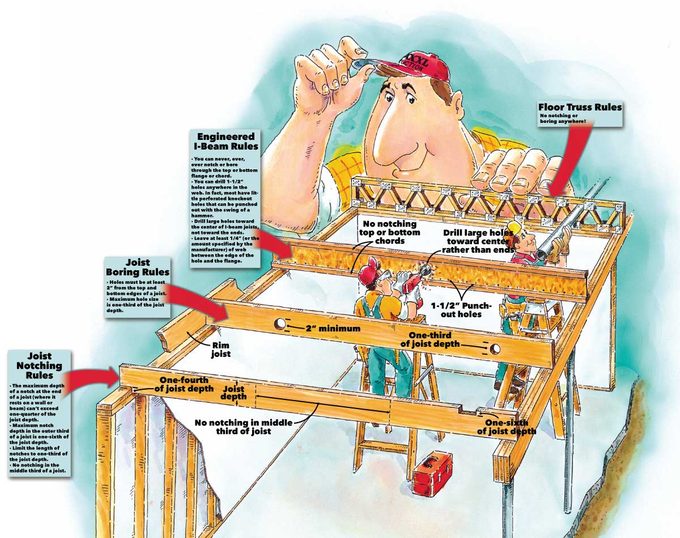



How Joists Work Family Handyman
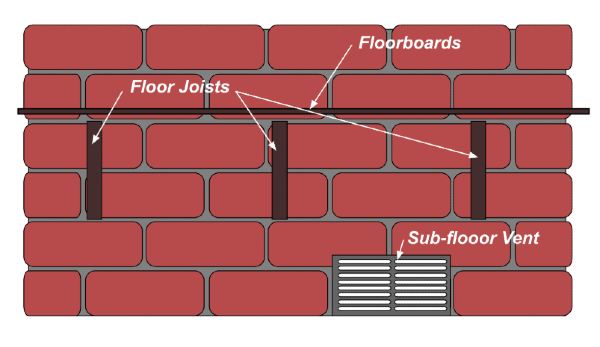



Adding Underfloor Insulation To Existing And Older Properties
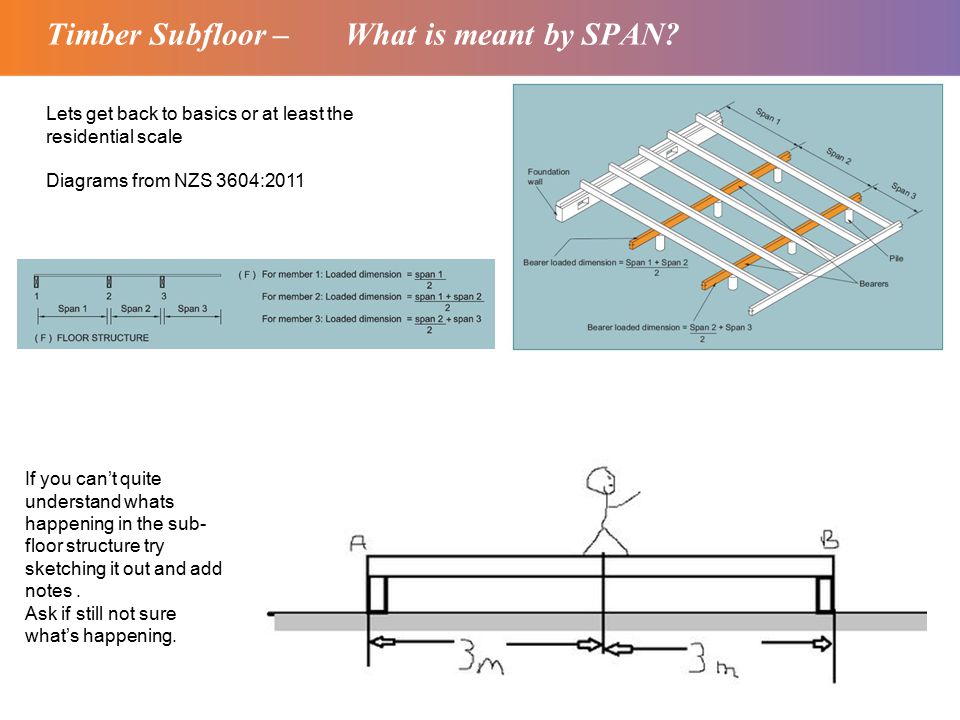



Topic 7 Timber Subfloor Systems Basic Ppt Video Online Download




How To Repair A Rotten Floor Mac Carpentry
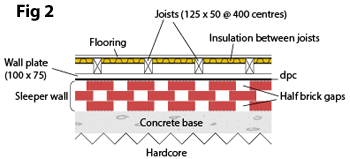



The Different Types Of Suspended Wooden Flooring Construction
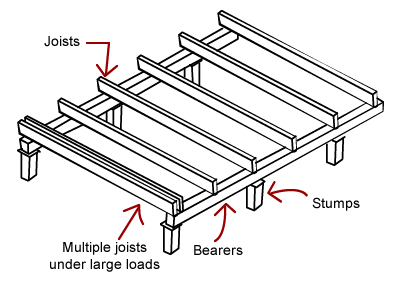



Beam And Joist Subfloor Build
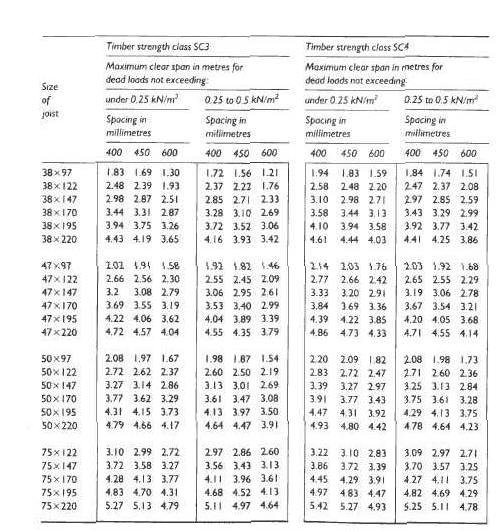



Tech2 Html



Building Guidelines Floors Joists
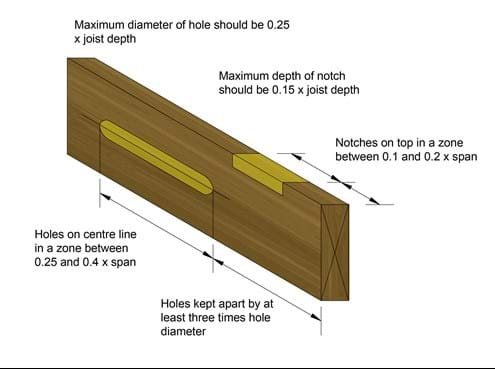



Suspended Timber Floor Construction Premier Guarantee




71 Top Tips When Fixing A Suspended Timber Floor Make It Moregeous
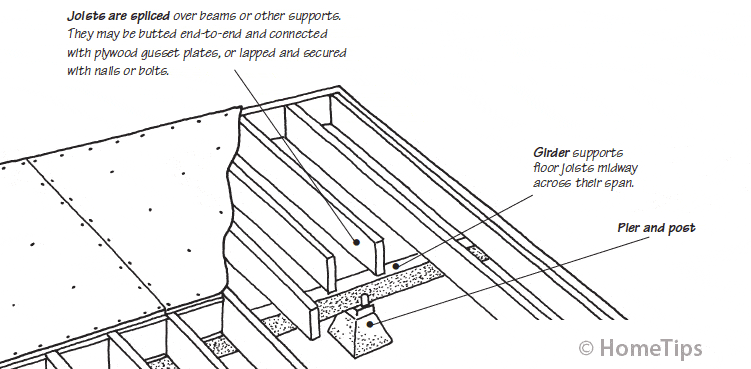



Floor Framing Structure



Installing Ufh Within A Suspended Timber Floor Ambiente




Fbe 03 Building Construction Science Lecture 3 Floor



Surprised Engineered Floor Joists Span Table Rssmix Info




How To Repair A Rotten Floor Mac Carpentry




Step By Step Suspended Timber Floors Green Building Store




Timber Construction Below You Will See The Plan View Chegg Com



Farm Structures Ch5 Elements Of Construction Floors Roofs



1
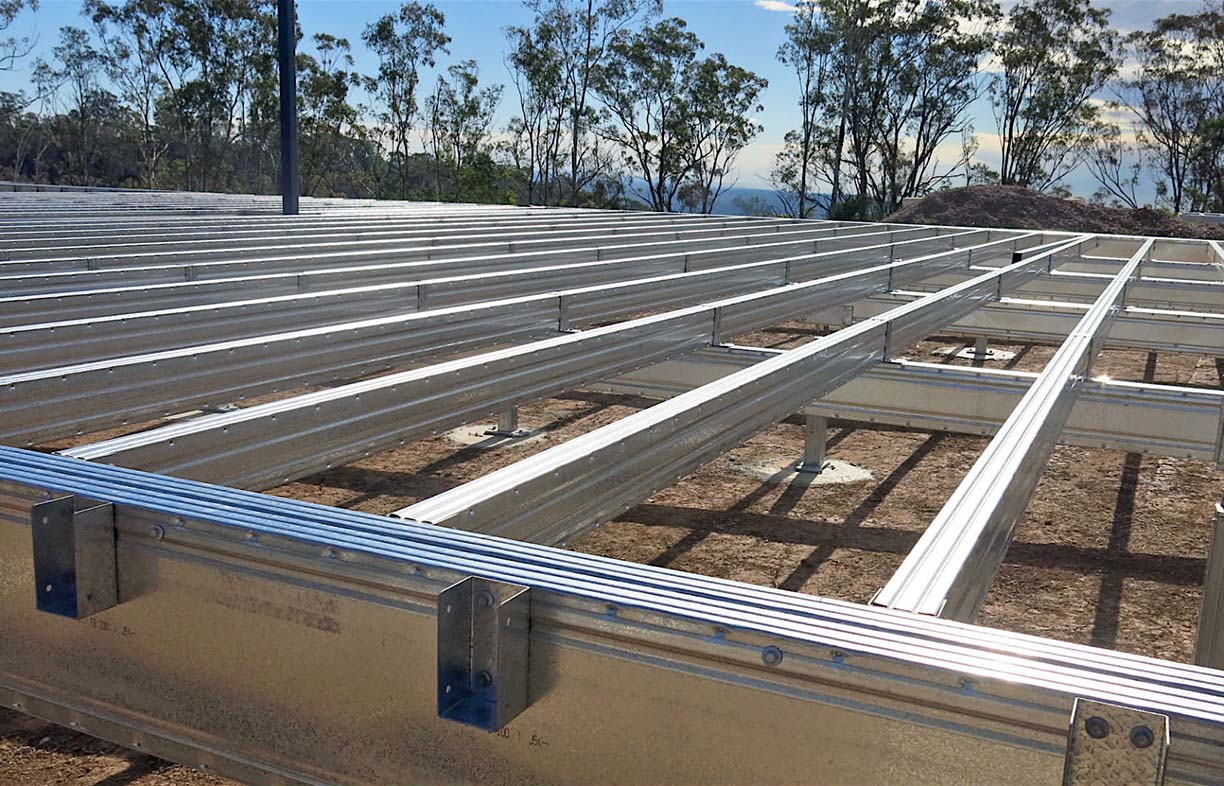



Strength Stability And Performance The Right Floor For Your Build Renew
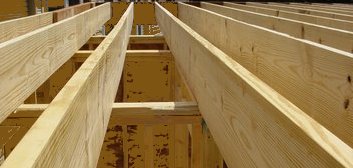



Maximum Floor Joist Span



Suspended Timber Floor Construction Studies Q1
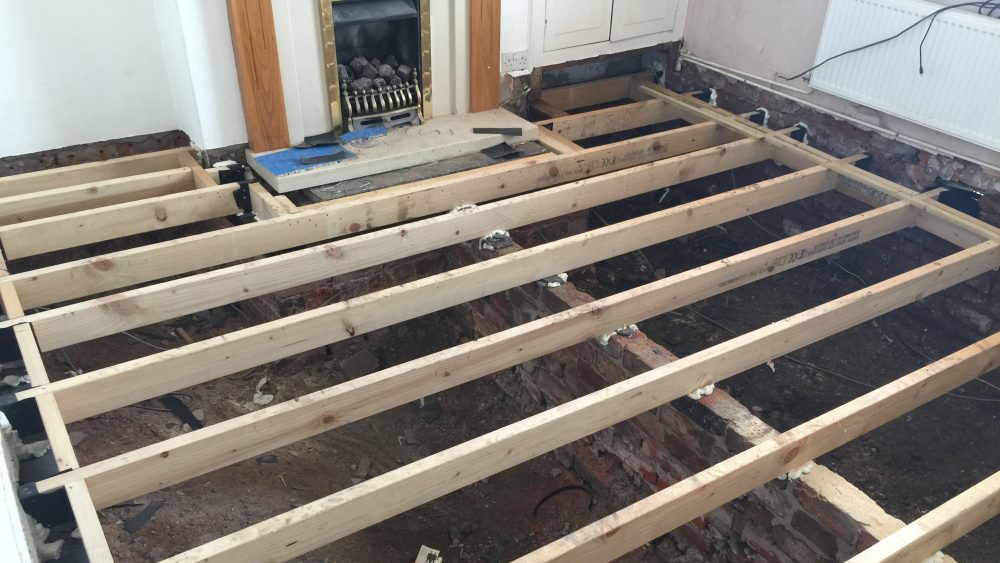



Suspended Timber Floor And How To Build A Floating Hollow Timber Floor Diy Doctor




Tech2 Html
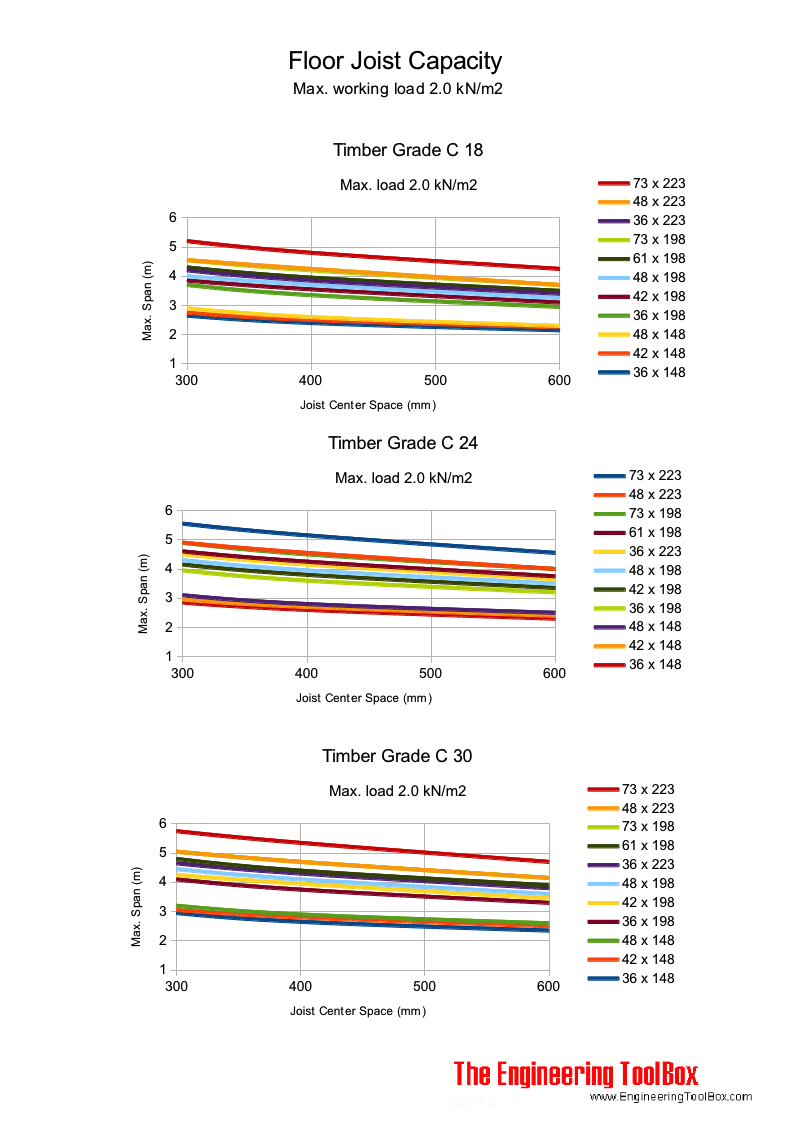



Floor Joist Capacity




Understanding Floor Joist Spans
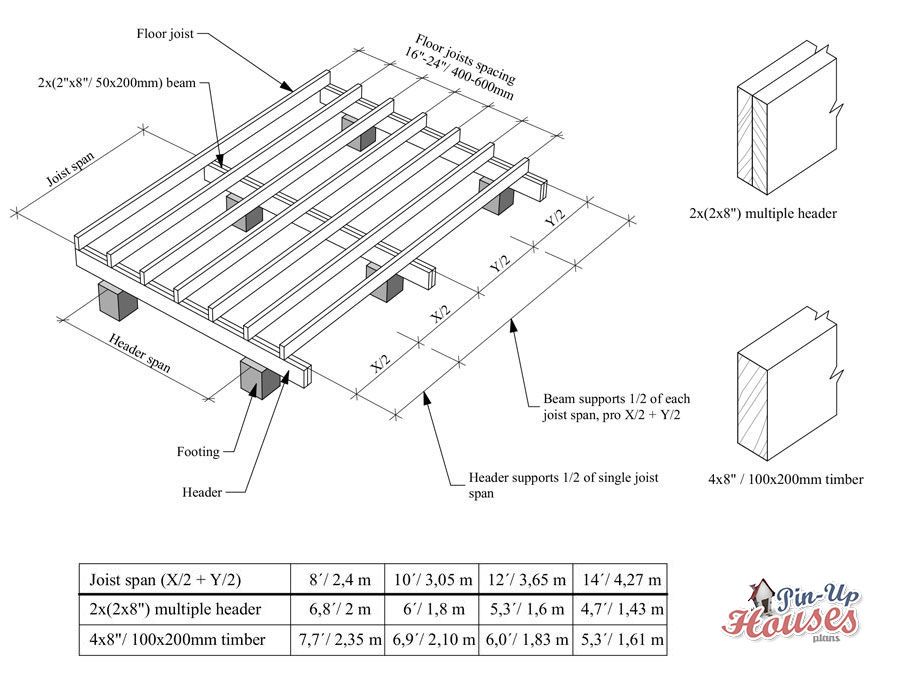



Small House Floor Joist Spacing Floor Joist Span Table Floor Framing
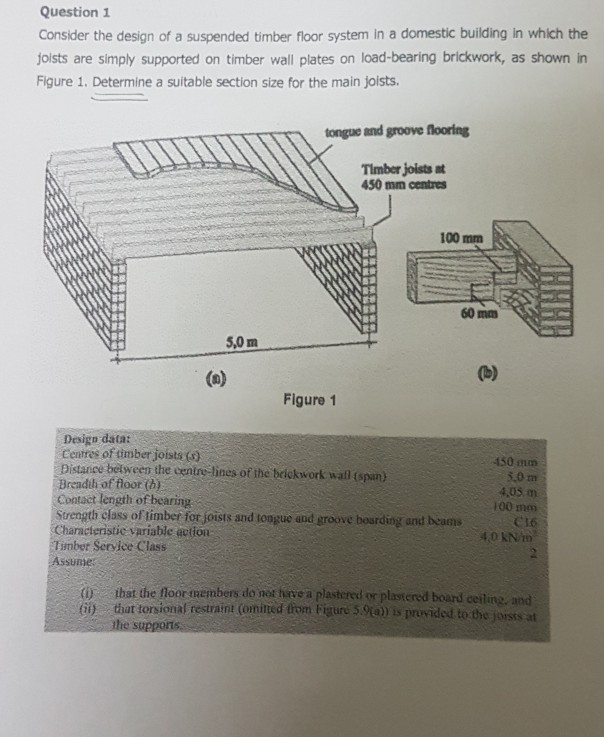



Question 1 Consider The Design Of A Suspended Timber Chegg Com



Building Guidelines Floors Joists
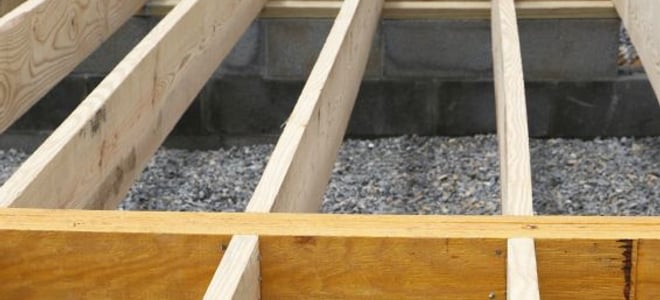



Proper Spacing For Floor Joists Doityourself Com
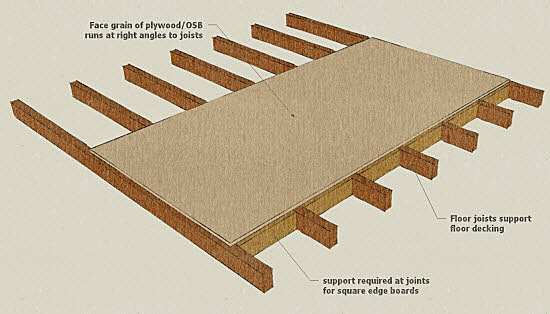



How To Make A Shed Floor Strong And Durable
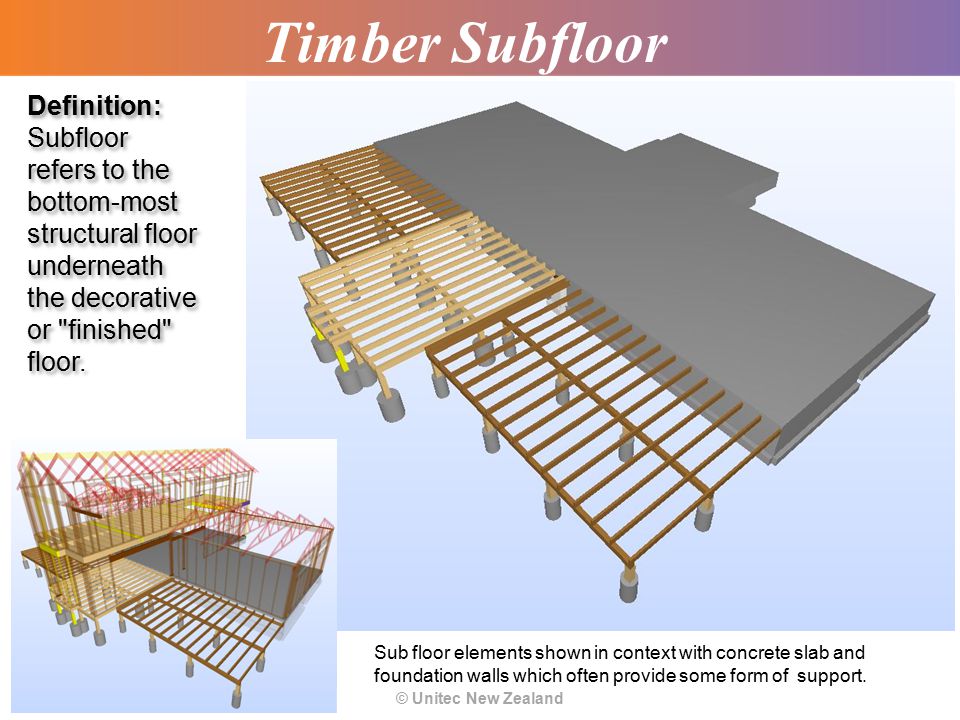



Topic 7 Timber Subfloor Systems Basic Ppt Video Online Download




6 Ground Floors Construction Studies




What Is A Timber Joist With Pictures
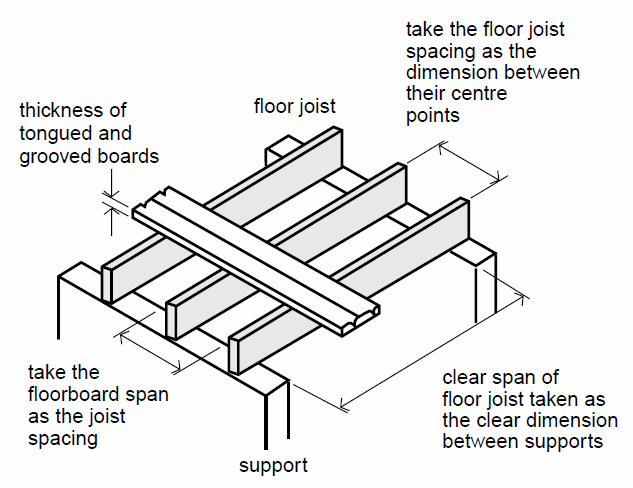



Carryduff Designs Floor Joists




Question 3 Consider The Design Of A Permanent Chegg Com
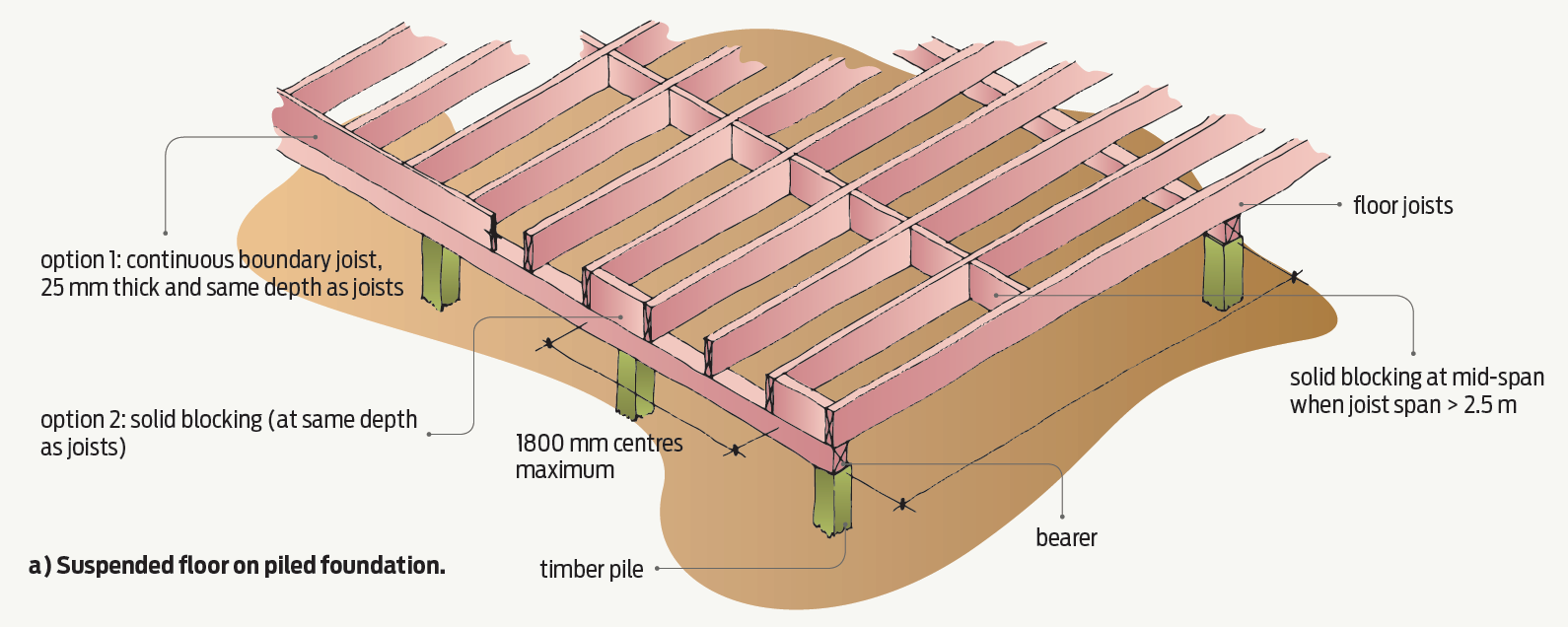



Suspended Floors Placemakers
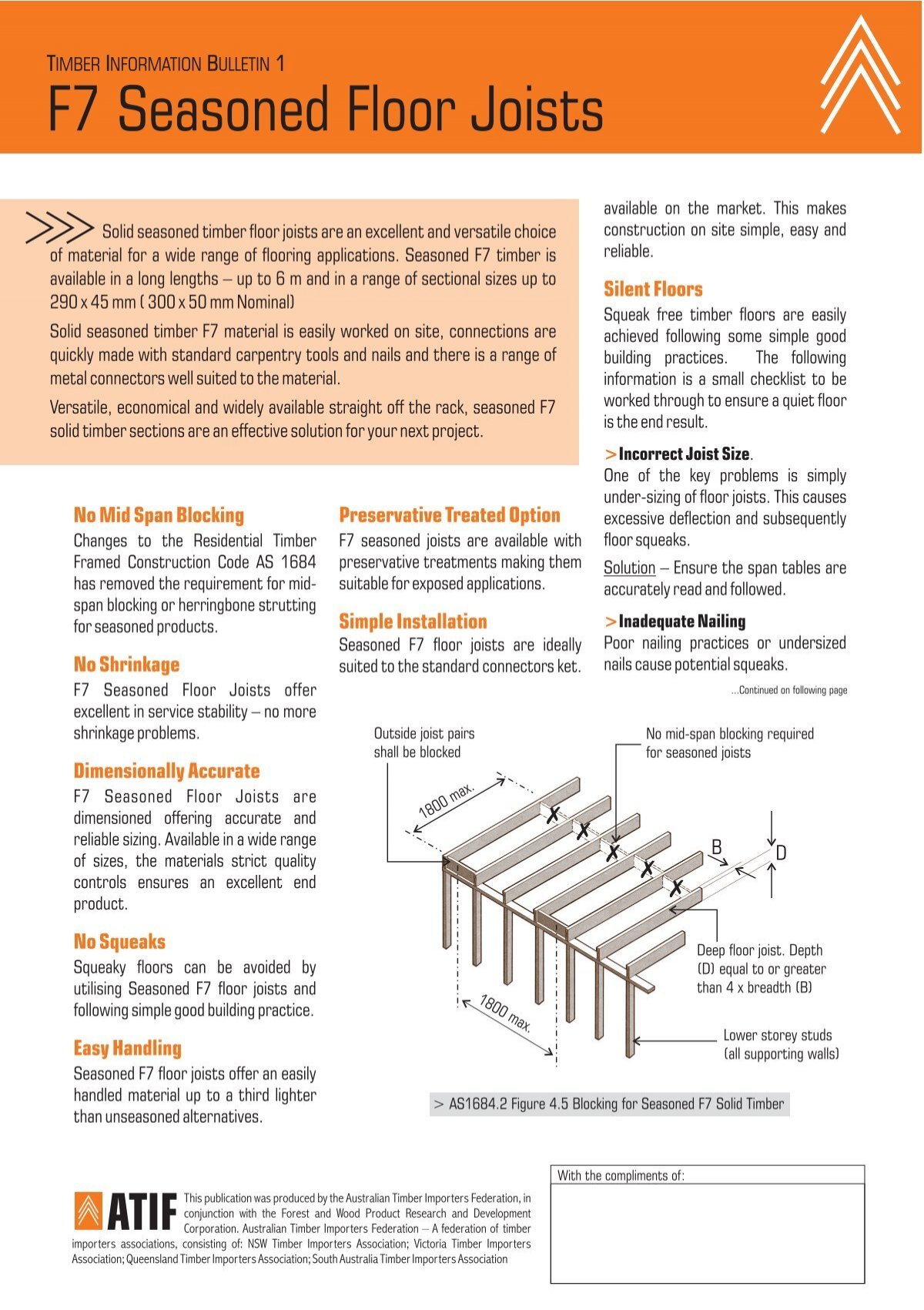



Seasoned Floor Joists Timber Net Au




6 4 8 Timber Joist Spans Nhbc Standards 21 Nhbc Standards 21
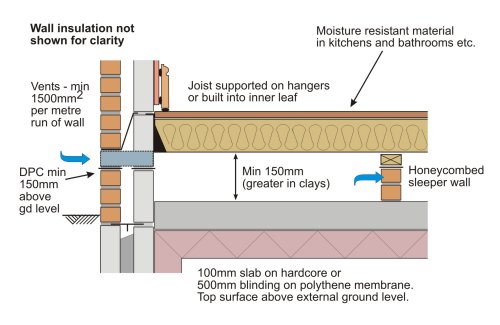



Evolution Of Building Elements
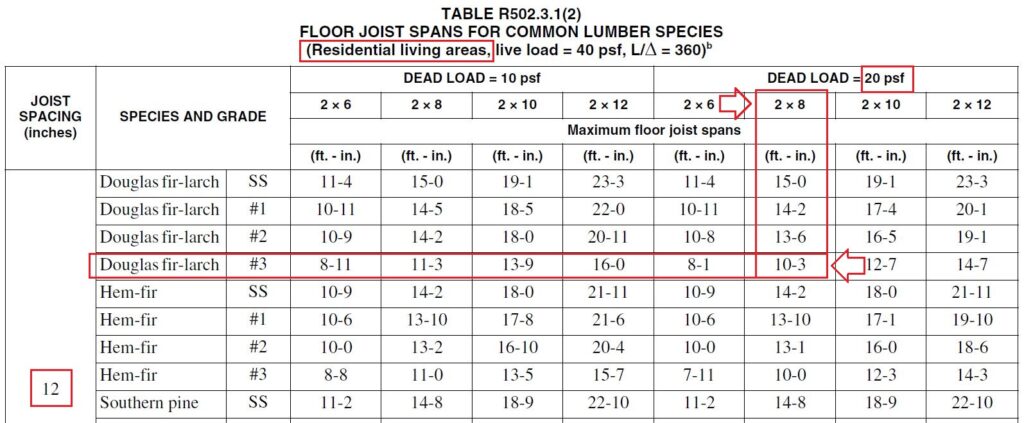



How To Size Floor Joists Per The Irc Easily Explained With Examples Building Code Trainer
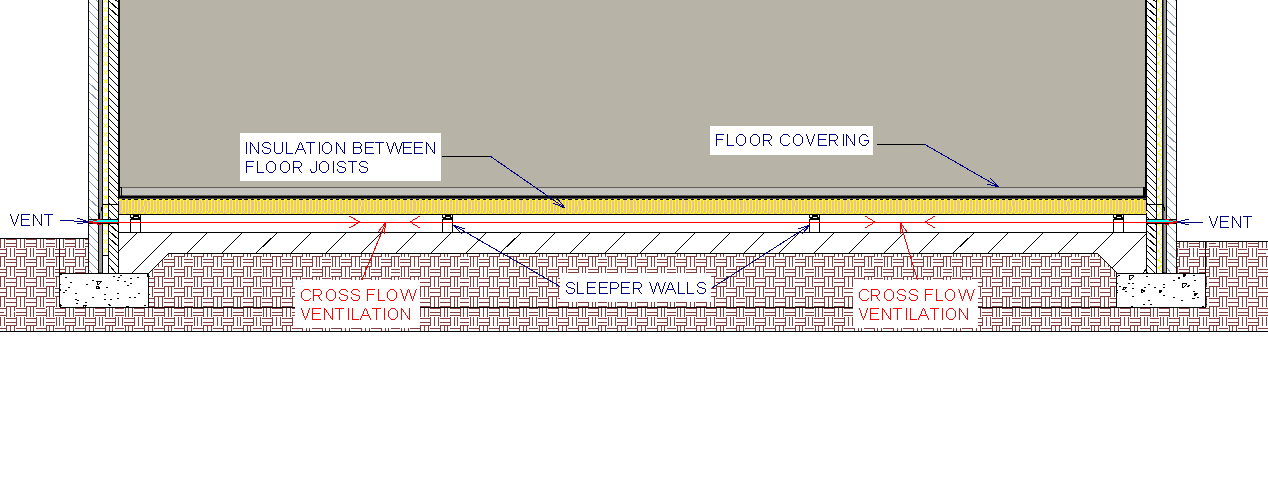



Ventilation In Floors Property Health Check




Floors



Suspended Timber Floor Construction Studies Q1



Floors And Ceilings




Decking Joists Products Ecochoice
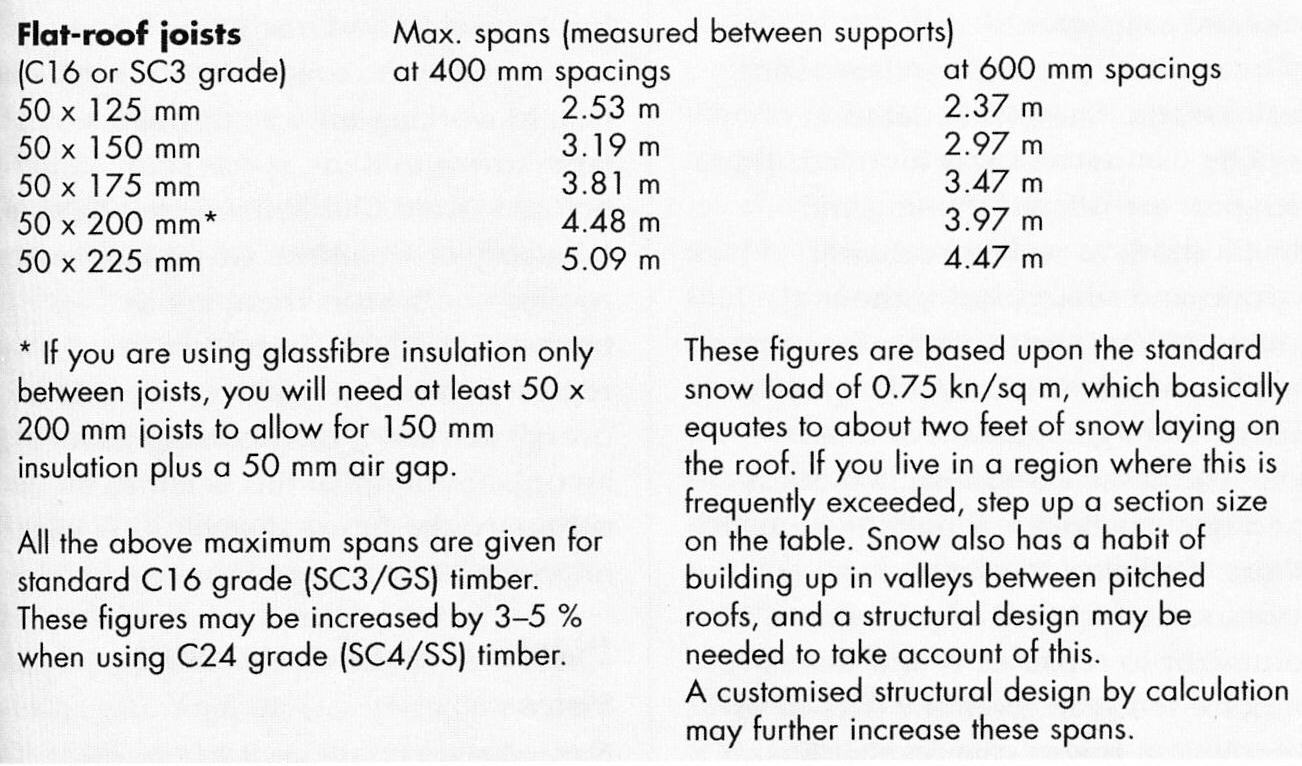



Tech2 Html



Full Article Suspended Timber Ground Floors Measured Heat Loss Compared With Models
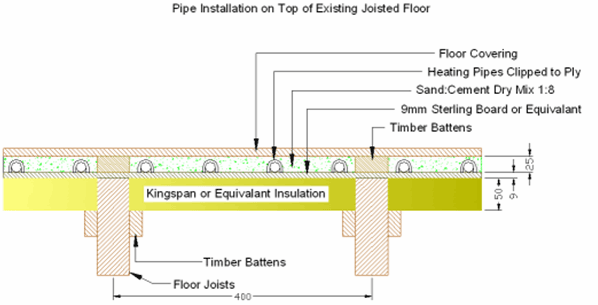



Can I Have Underfloor Heating With Joisted Floors



2




Fbe 03 Building Construction Science Lecture 3 Floor




Floor Joist Spans For Home Building Projects Today S Homeowner




Jji Joist Technical Manual Jan 21 By Jamesjones Sons Issuu
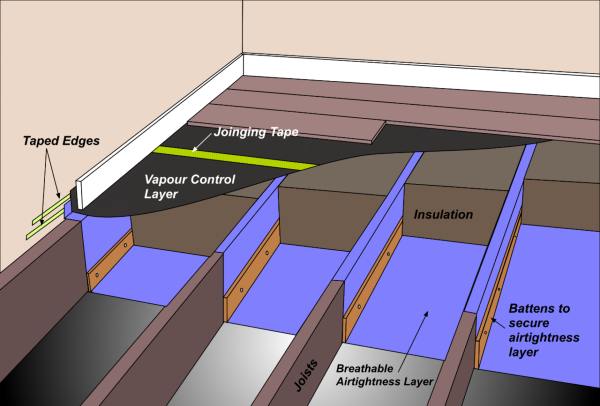



Adding Underfloor Insulation To Existing And Older Properties




A Layout And Dimensions Of The Field 2 4 W Timber Floor B Download Scientific Diagram
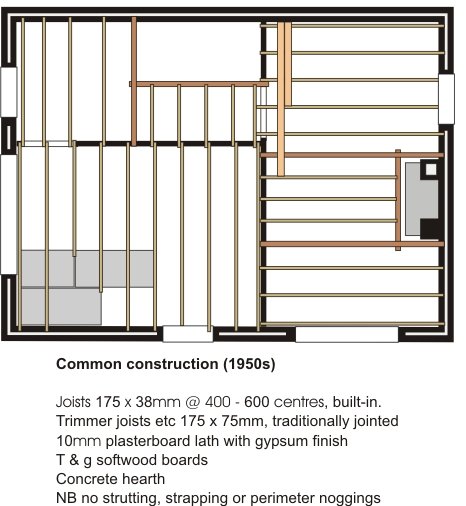



Evolution Of Building Elements



Http Www Woodspec Ie Docs Woodspec final section a Pdf



1
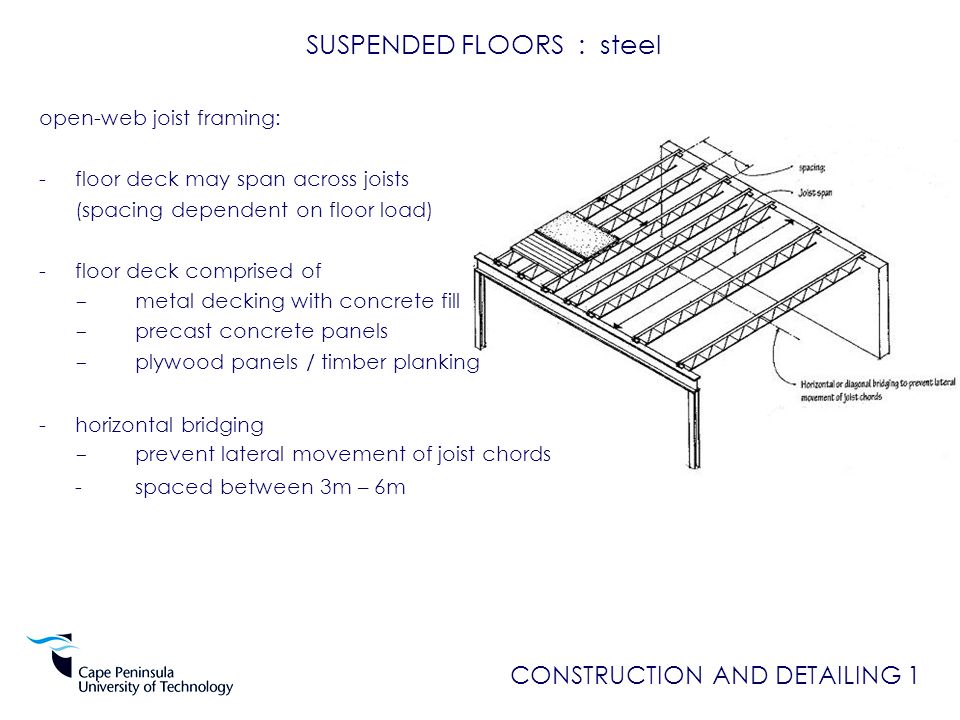



Construction And Detailing 1 Ppt Video Online Download
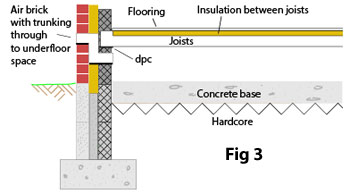



The Different Types Of Suspended Wooden Flooring Construction




Suspended Floors Placemakers




Building Construction Ii Pdf Free Download



1




Detail Post Floor Details First In Architecture
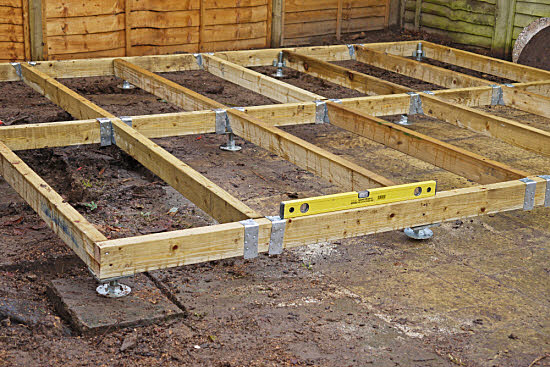



How To Make A Shed Floor Strong And Durable



0 件のコメント:
コメントを投稿